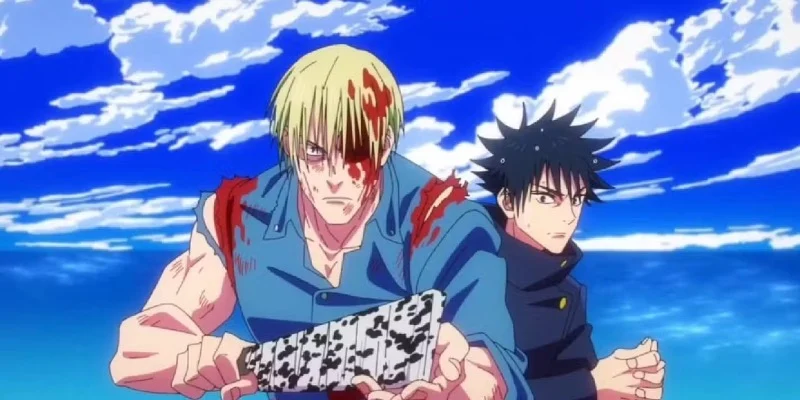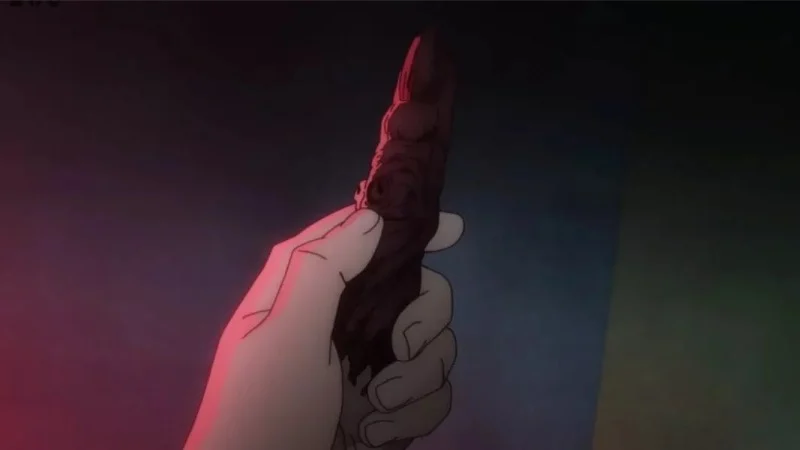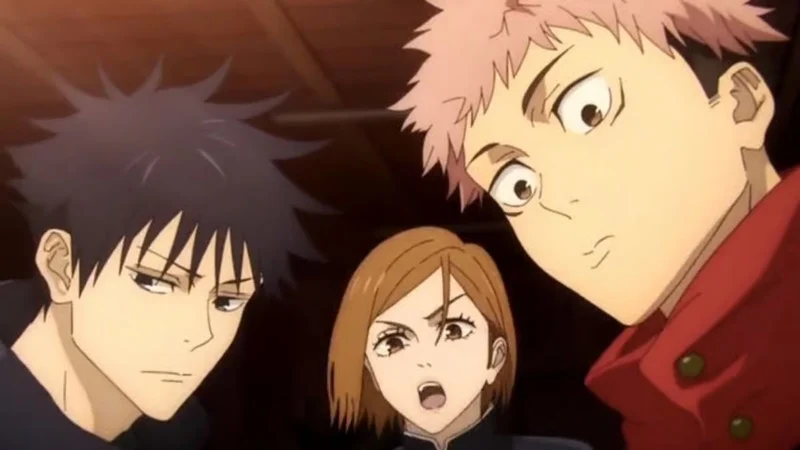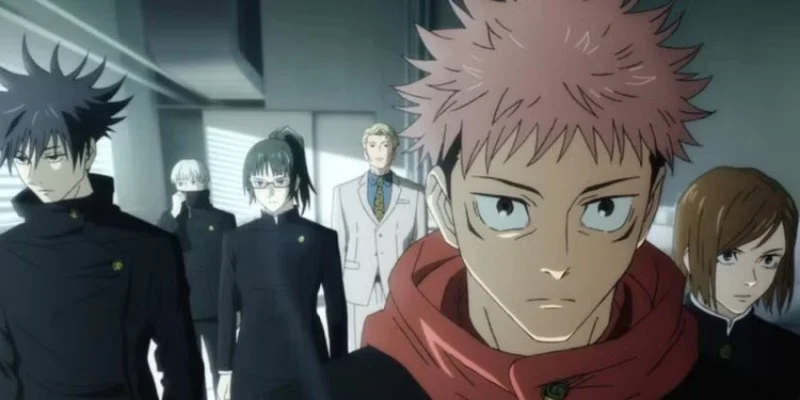
Even a well-made show isn’t perfect, and ‘Jujutsu Kaisen‘ has a few minor inconsistencies that fans often enjoy finding when rewatching. These aren’t major flaws—just small details like props changing slightly, timing errors, or incorrect labels. If you pay close attention, you’ll find plenty of these little details throughout the series.
Prop counts that reset between cuts

In fast-moving scenes, the number of Nobara’s nails and Yuji’s talismans sometimes seems to change unexpectedly. You might see a full set of nails in one shot, then fewer in the next, without any explanation for the difference. This also happens with nails that are thrown – they sometimes reappear at their feet when the camera angle changes. These inconsistencies are most noticeable during quick, dynamic fights where the editing focuses on keeping the action flowing rather than perfectly tracking every item.
Bandages and scars switching sides

Sometimes, details on characters will briefly appear flipped between frames, particularly during fast-paced action. For example, Nanami’s bandages or small injuries might show up on opposite sides in different shots. We also see Mahito’s facial stitches briefly mirrored. This usually happens because the animation uses repeated elements or quick edits during fight scenes.
Blood and grime continuity after battles

During intense fighting, the amount of blood visible on characters’ clothes and skin can change rapidly, even between single shots. A character might be covered in blood in one moment, and then appear much cleaner the next, without any time elapsing. This is especially noticeable on gloves and sleeves. The inconsistency is more apparent in scenes that quickly switch between close-up and wide-angle views with many cuts.
Dorm and campus layout inconsistencies

The exterior shots of Tokyo Jujutsu High don’t always match up with how the school is laid out inside. When scenes switch from outside to inside, the positions of doors and the lengths of hallways sometimes change. Also, windows that appear to face a certain direction in wide shots can seem to look out onto something different once you’re inside the building. These inconsistencies are minor, but viewers who pay attention to the repeated locations throughout the series can easily notice them.
Grade labels that do not always align

The show uses a consistent system for ranking magical abilities and curses, but the way these rankings are presented isn’t always perfectly clear. Sometimes a curse will be described as one level during a conversation, then seem slightly stronger or weaker in a later summary. Also, how well students are progressing doesn’t always line up exactly with how they were previously described, especially when the show recaps past events. These differences usually happen during episode summaries.
Finger tally confusion for Sukuna

It’s common for initial reports about missing or eaten fingers to vary. The first numbers given by teachers or officials often don’t quite match later counts until everything is fully understood. Sometimes, reports use rounded numbers for easier understanding, which can cause slight differences from the precise total. If you track the numbers yourself, you’ll notice these inconsistencies over a short period.
Sub and dub terminology drift

The names of techniques and how curses are categorized aren’t always exactly the same in the subtitles and the English dub. A term might be presented one way in the subtitles, but phrased differently – and more naturally for English speakers – when spoken in the dub, even in the same scene. Sometimes, on-screen text will show the original Japanese wording while the spoken dialogue uses a clearer translation. This leads to a mix of terms that can feel confusing if you switch between versions.
Shibuya station signage that breaks flow

During the busy scenes at Shibuya, the platform numbers and signs don’t always match up consistently. Characters sometimes seem to move between locations that wouldn’t be possible without taking a route we don’t see. Even the direction arrows in the background change direction between shots. The editing focuses on building excitement rather than showing a perfectly clear path for the characters.
Wardrobe details that quietly change

During conversations with multiple shots, you might notice small inconsistencies in the animation, like buttons changing or ties appearing at different lengths. Details such as Gojo’s blindfold sometimes look slightly different depending on whether the shot is close-up or wide, and Panda’s size can vary a little. These are typical quirks that happen when creating animated scenes with many cuts.
Opening and ending visuals ahead of the story

The opening and ending sequences of the show often give glimpses of things – techniques, characters, or outfits – before they actually happen in the story. Careful viewers might notice these elements before their official introduction, which can feel a little confusing at first. However, later story arcs eventually explain these early appearances. These sequences aren’t meant to be a strict timeline of events, but rather hints at what’s coming up thematically.
Tell us which slip you noticed first in ‘Jujutsu Kaisen’ in the comments.
Read More
- Fed’s Rate Stasis and Crypto’s Unseen Dance
- Silver Rate Forecast
- Красный Октябрь акции прогноз. Цена KROT
- Blake Lively-Justin Baldoni’s Deposition Postponed to THIS Date Amid Ongoing Legal Battle, Here’s Why
- Ridley Scott Reveals He Turned Down $20 Million to Direct TERMINATOR 3
- Dogecoin’s Decline and the Fed’s Shadow
- The VIX Drop: A Contrarian’s Guide to Market Myths
- Northside Capital’s Great EOG Fire Sale: $6.1M Goes Poof!
- MSCI’s Digital Asset Dilemma: A Tech Wrench in the Works!
- Bitcoin’s Ballet: Will the Bull Pirouette or Stumble? 💃🐂
2025-11-01 01:45